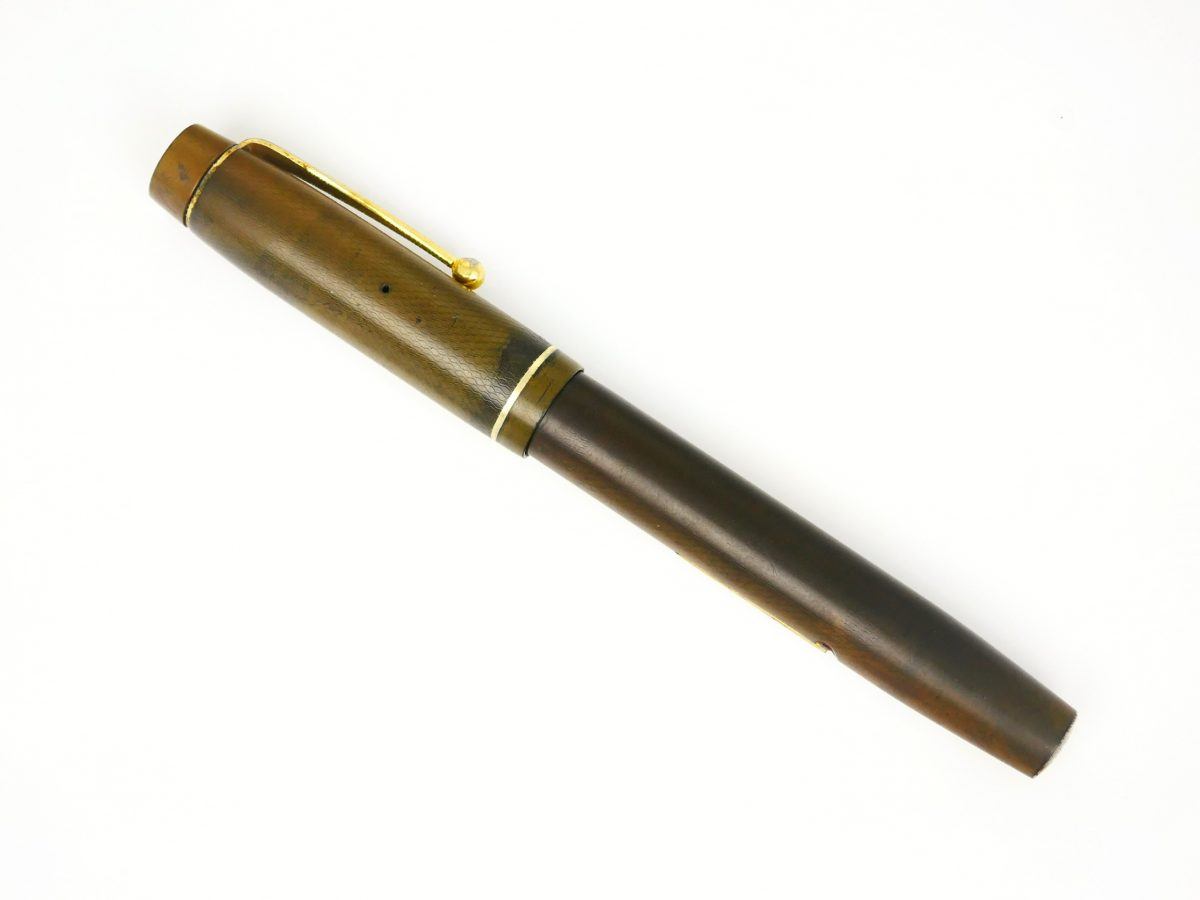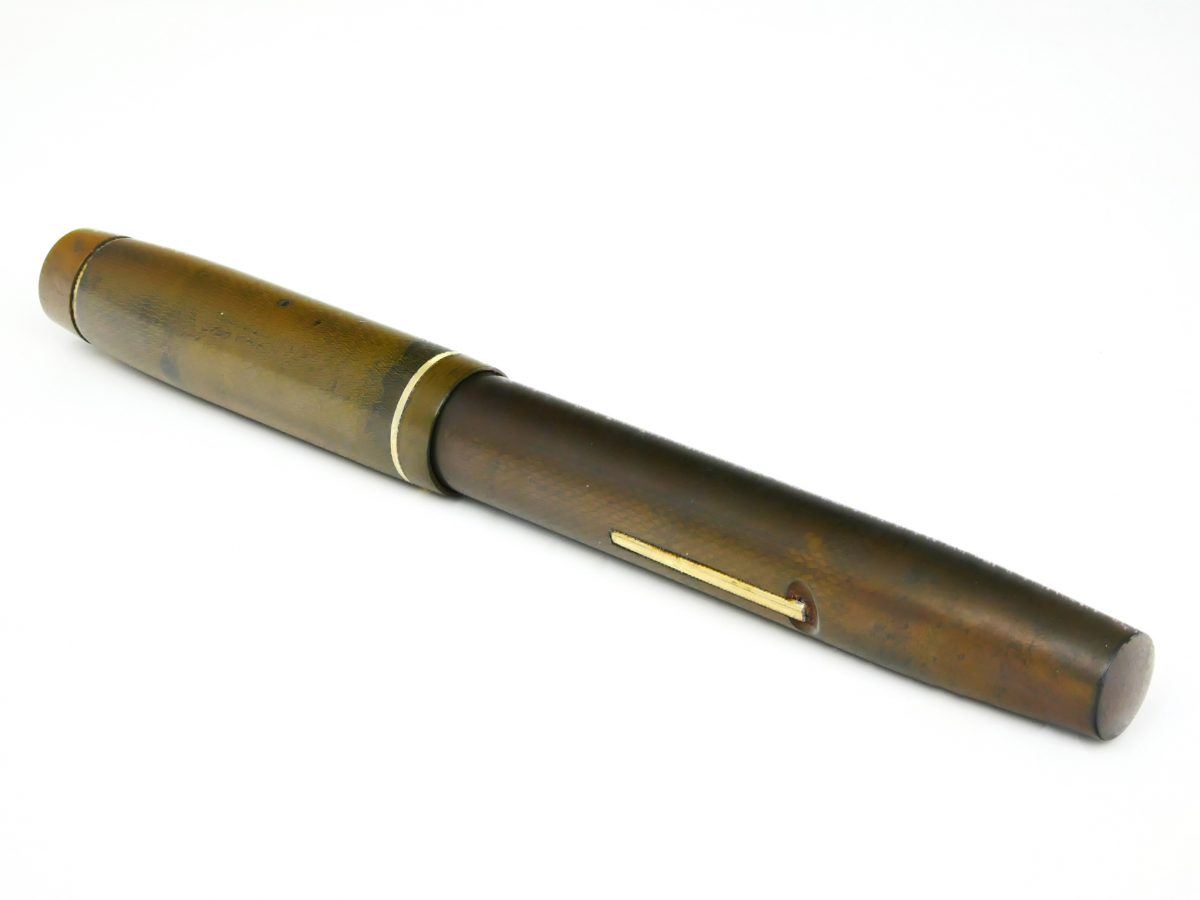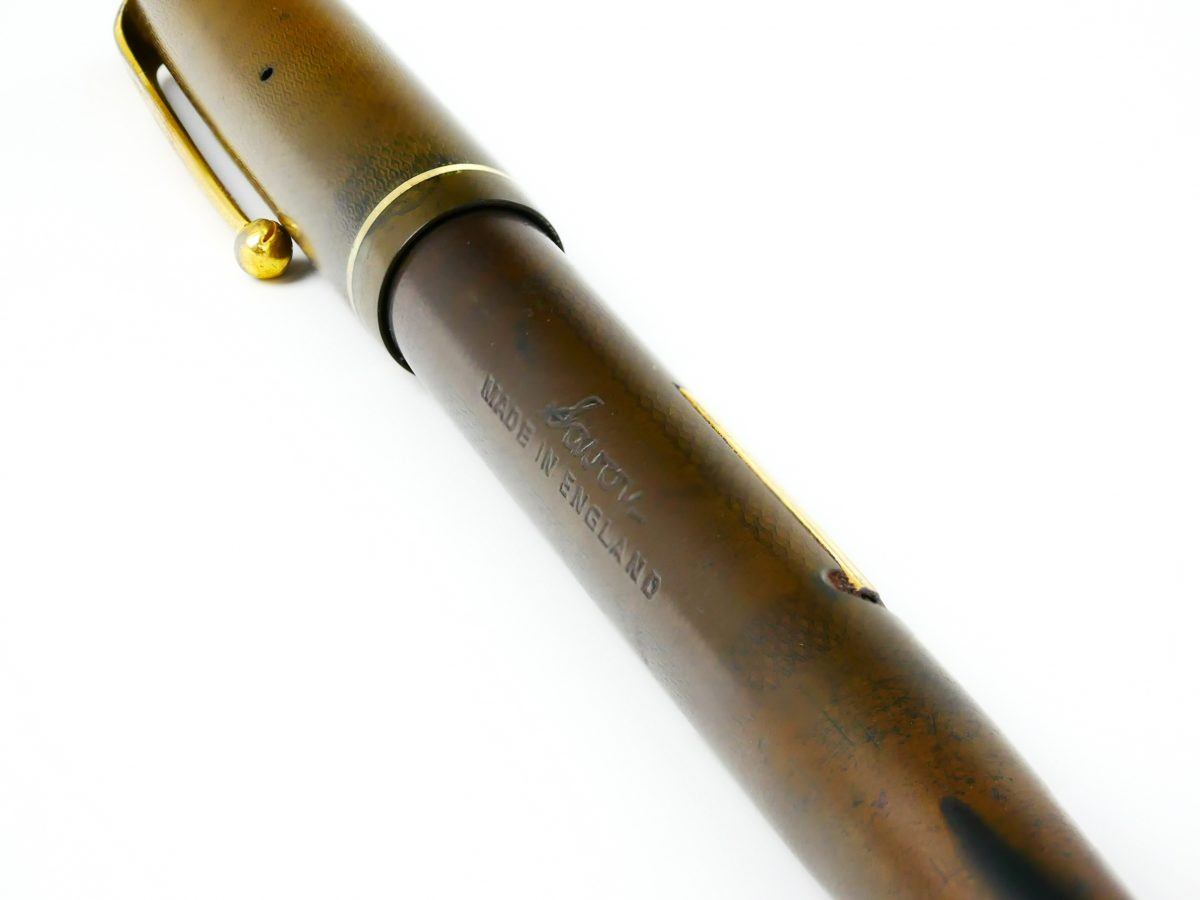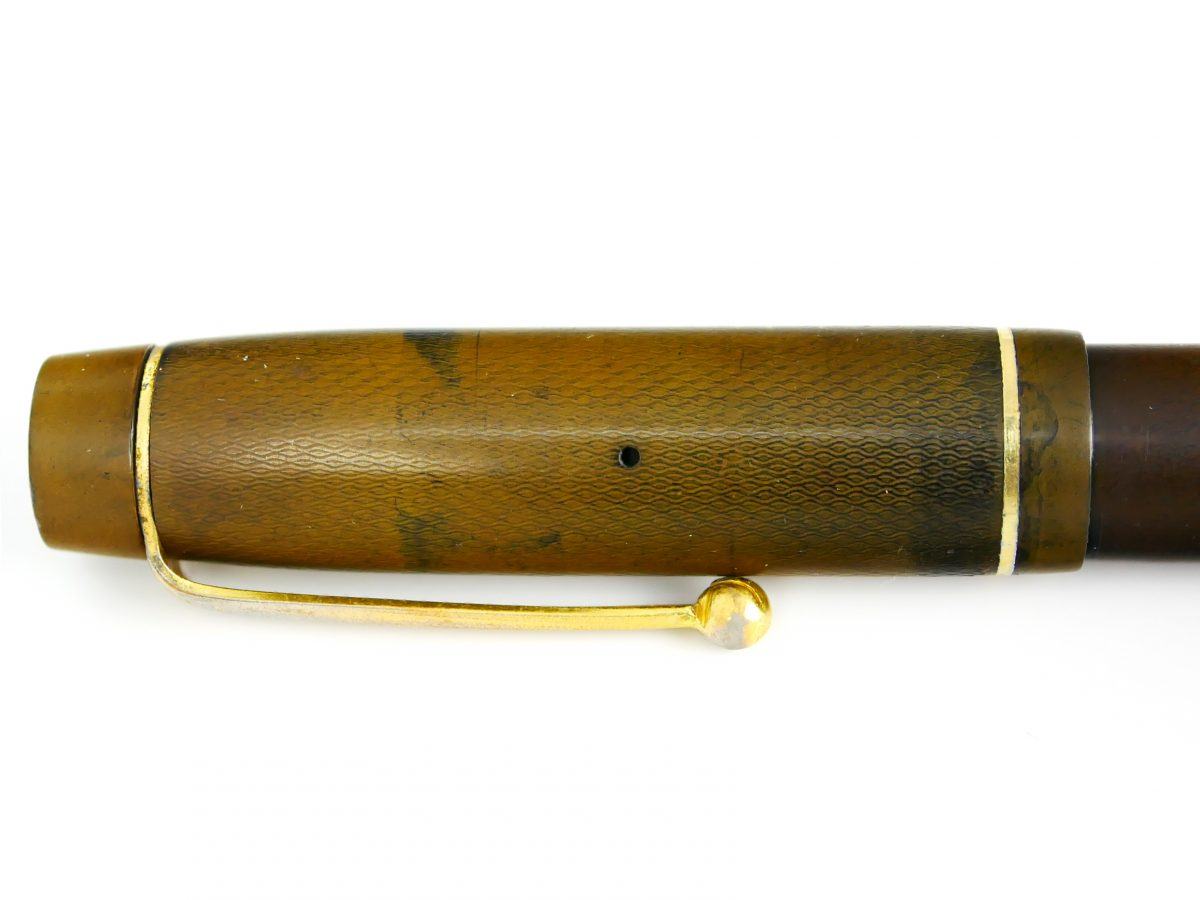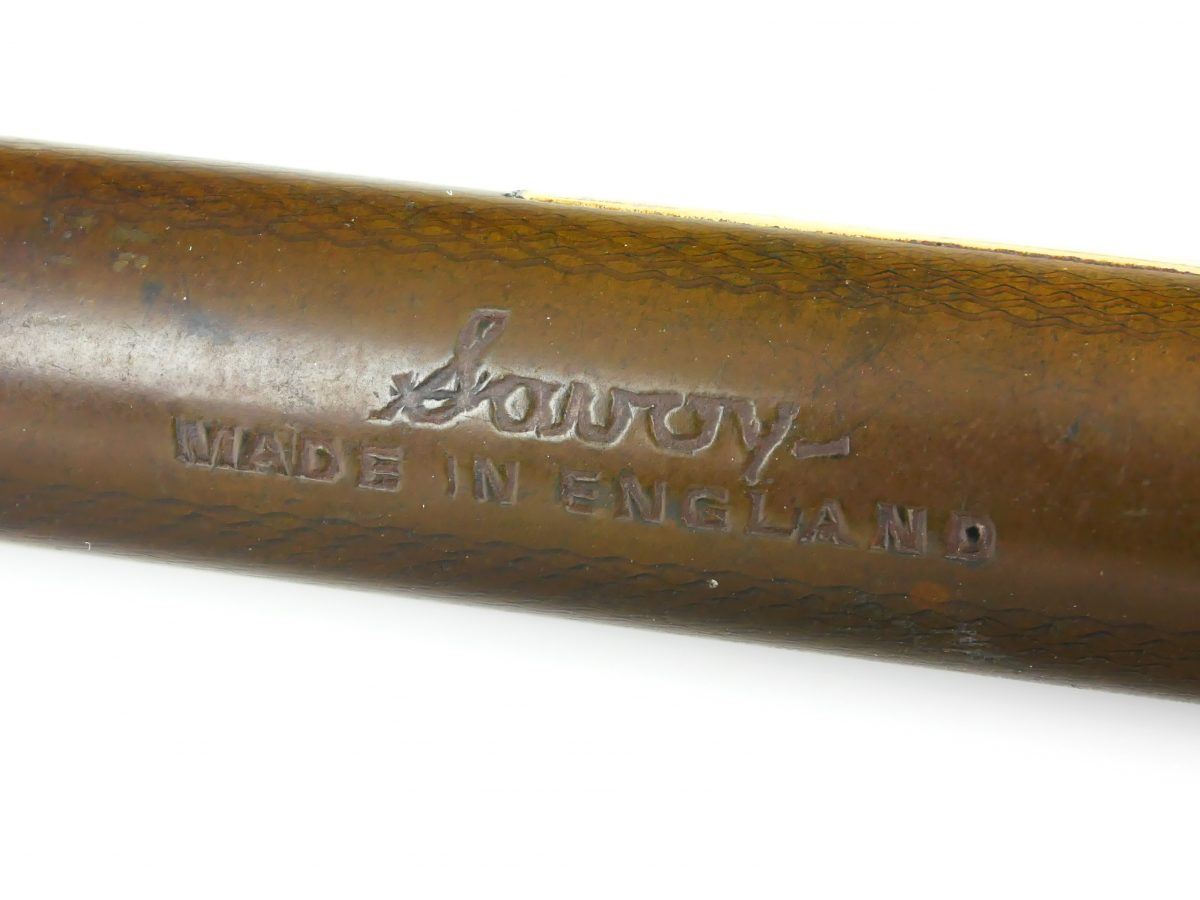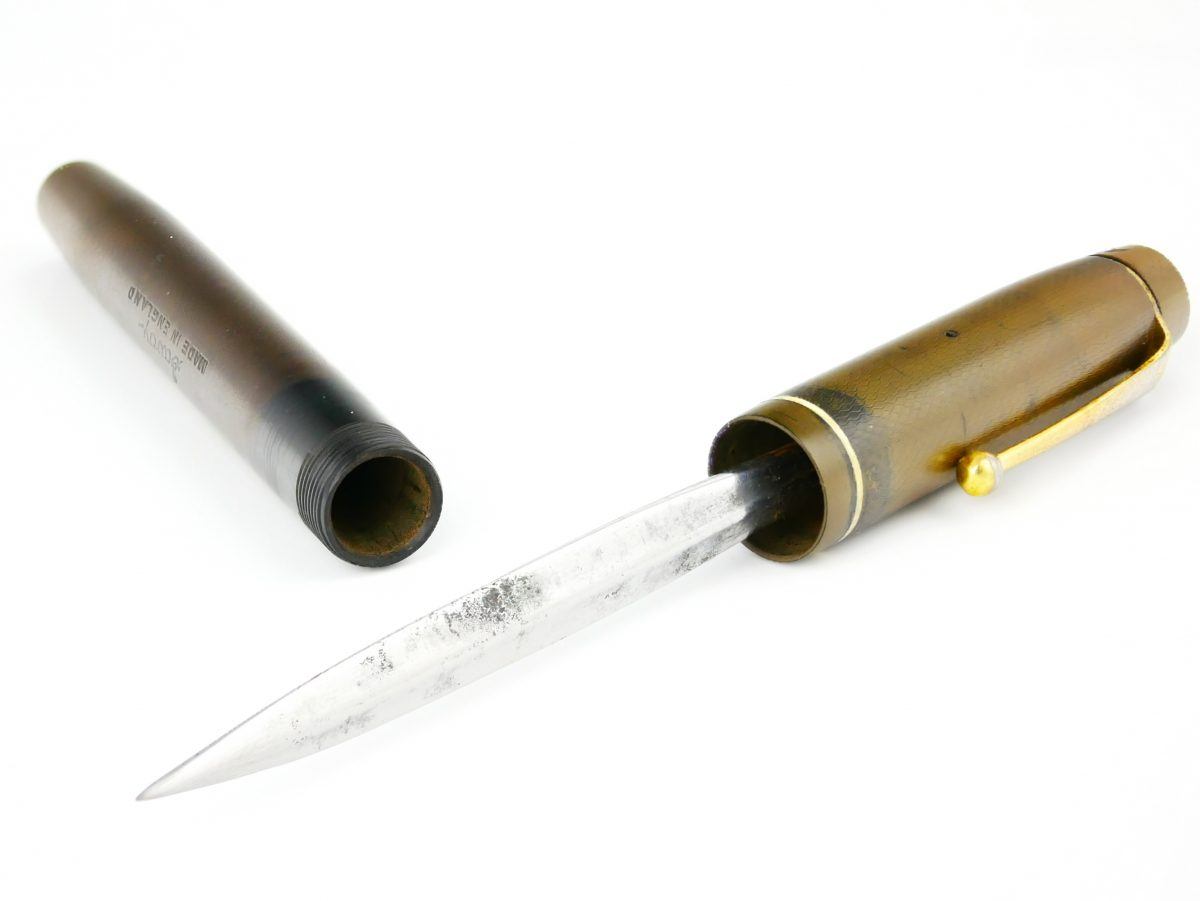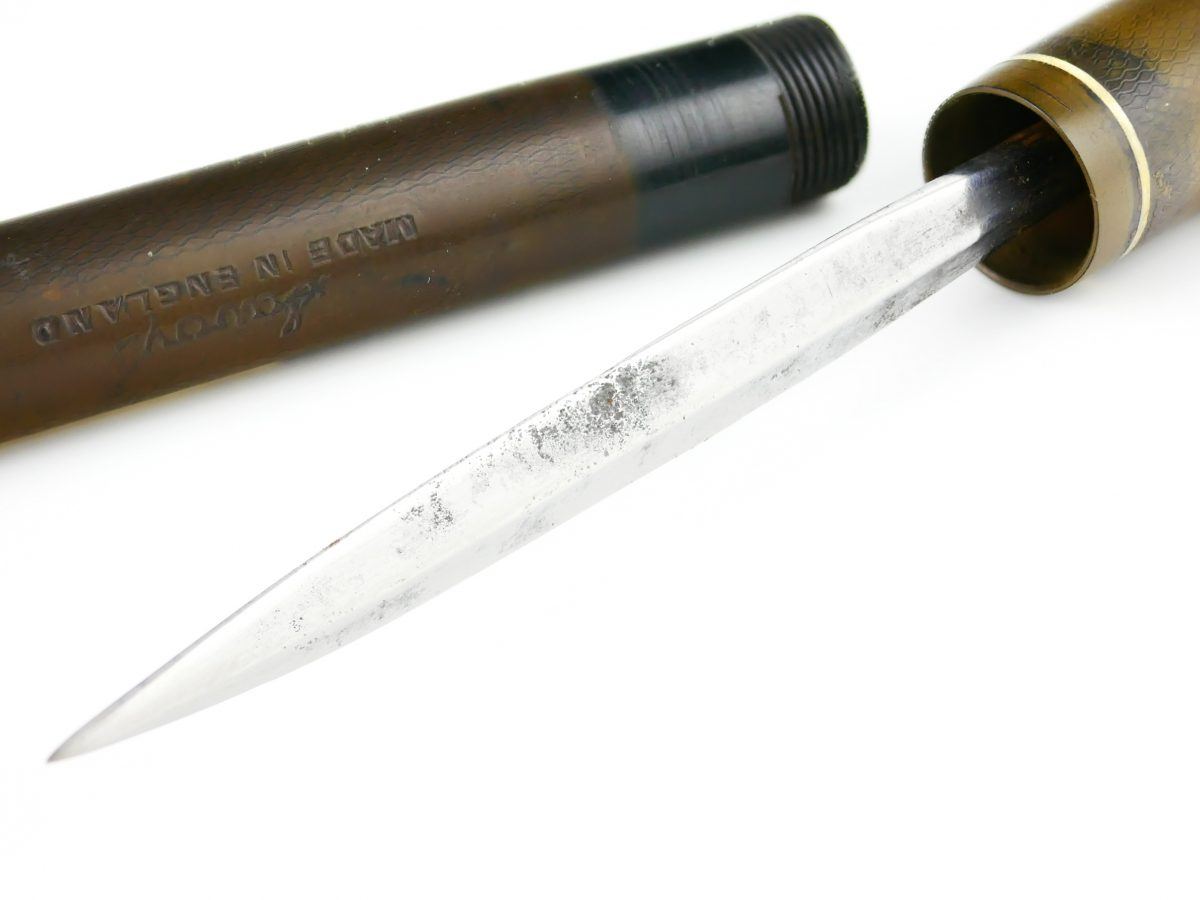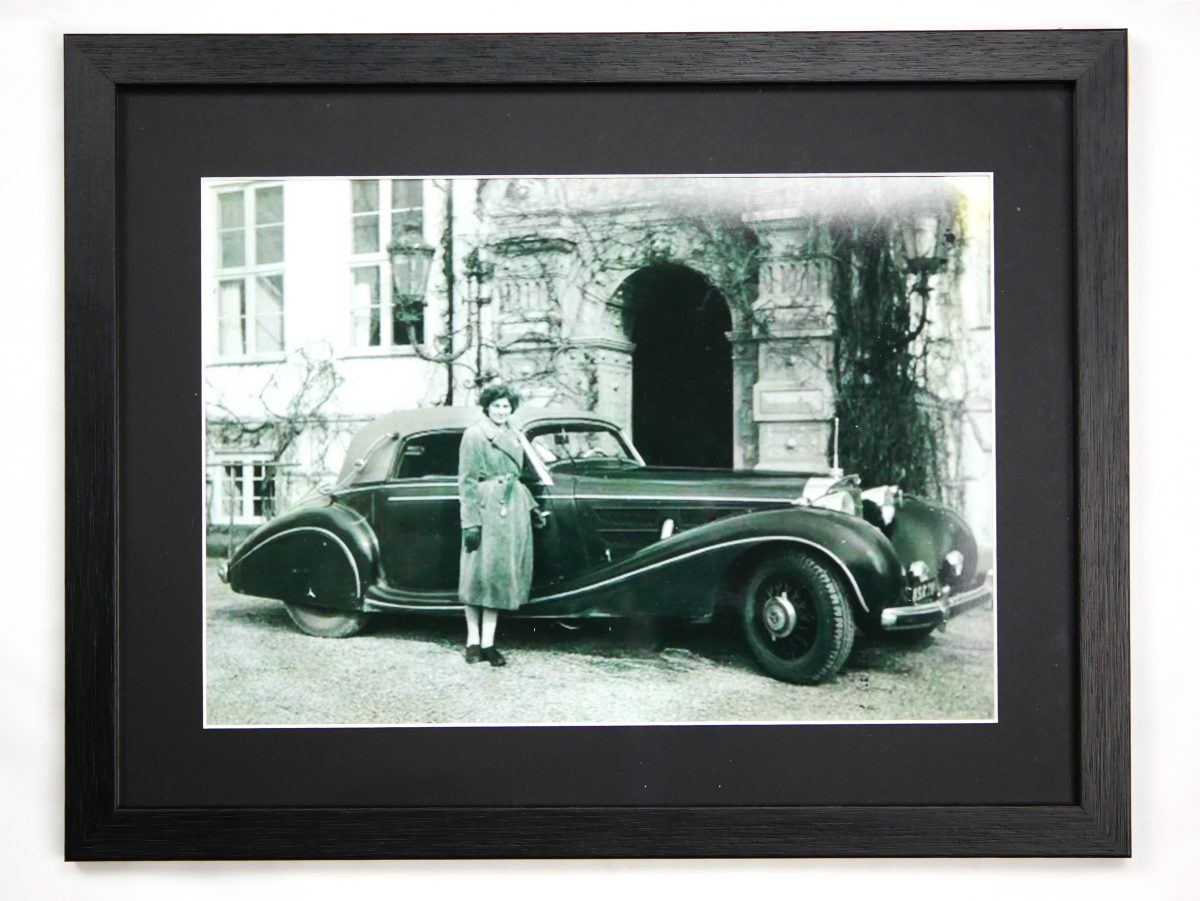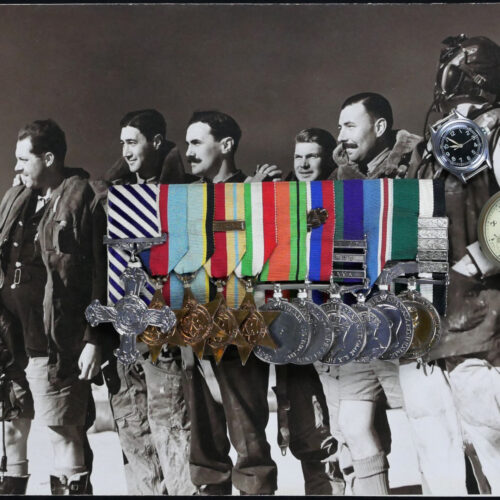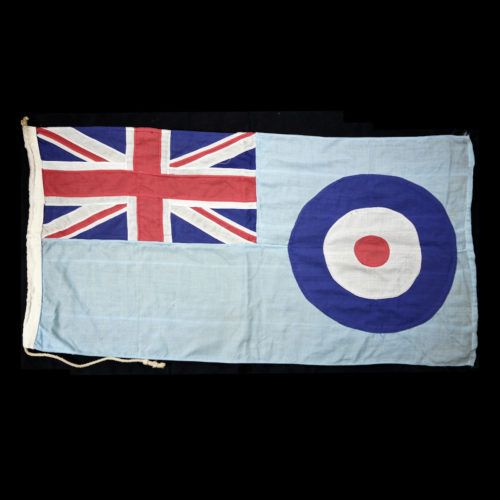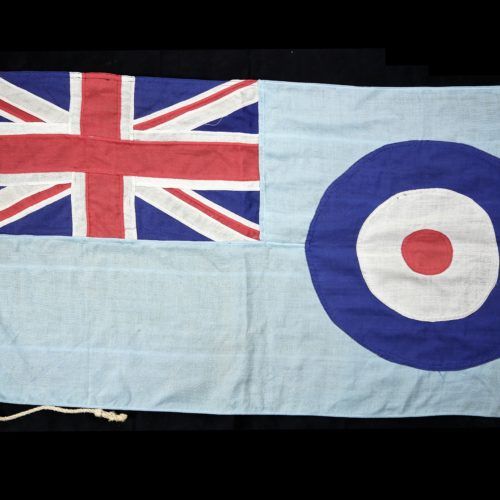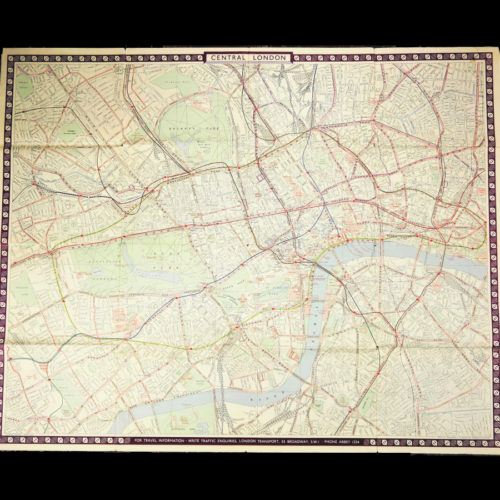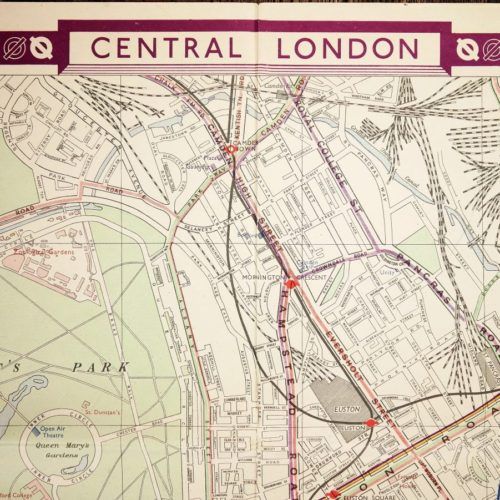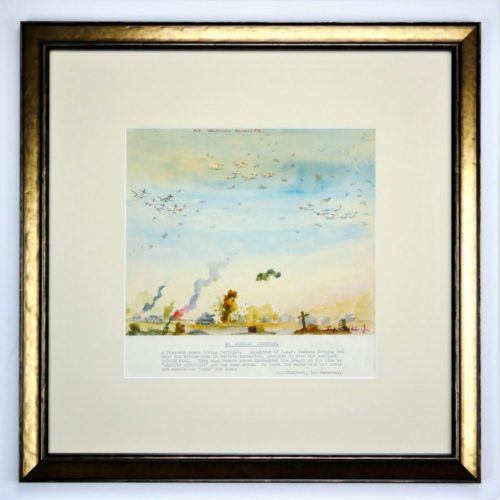Extremely rare and unique S.O.E. fountain pen dagger formerly the property of renowned former S.O.E. agent, Beatrice Jackman.
Beatrice Jackman
English-born but the stepdaughter of a Danish aristocrat, Beatrice Jackman was a courier for the Danish Resistance during the Second World War until coming to the notice of the Gestapo. She escaped to neutral Sweden, where she was recruited by the British legation section of the Special Operations Executive (SOE).
Her father, Captain John Darlow, died when she was 12 and her mother married Count Fredrik Brockenhuus-Schack and joined him on his country estate in South Zealand, Denmark. Beatrice continued her education at Eastfield, Ascot, but by spending her holidays in Denmark and through contact with the estate staff and her stepfather’s friends she soon became bilingual.
The German invasion of Denmark and Norway on April 9, 1940, took both countries by surprise because they had sought to remain neutral in the war declared by Britain and France against Germany the previous September. Indications that the Western Allies were planning to occupy Norwegian ports to prevent their use by Germany precipitated a pre-emptive strike ordered by Hitler. Denmark was occupied in 24 hours and Norway in a matter of weeks.
Unlike Norway, where experienced skiers could take refuge on the snow-covered Hardanger Vidda, Denmark’s agricultural landscape was ill-suited to Resistance operations, which were consequently slow to start. After RAF aircraft began to crash in Denmark on return from missions over Germany, however, an organisation sprang up to hide and shelter surviving crews until they could be smuggled to safety by sea to Sweden.
At the time of the German invasion, the 19-year-old Beatrice had a leg in plaster as a result of a skiing accident in Norway. As soon as she was able to discard the cast, she resumed her custom of riding around her stepfather’s estate and in the autumn of 1941 went to Copenhagen University to study English. In Copenhagen she met Eric Münte, a pioneer of the Danish Resistance, who needed couriers able to travel inconspicuously around Zealand with messages concerning help and shelter for fugitive airmen without arousing suspicion.
Invited by Münte to join his escape line organisation, Beatrice went home each weekend and carried messages on horseback or bicycle in the districts adjacent to the Brockenhuus-Schack estate, where friends of her stepfather were sheltering airmen until they could be shipped out. Her English was also helpful in explaining to the airmen the strict routine that they needed to follow while in hiding and the plans for their eventual escape.
March 1943 marked the end of a comparatively benign German occupation when, supported by a small cell of the SOE, the Resistance movement began a programme of sabotage against factories, shipyards and shipping supporting the German war effort. Then in August Danish Jews were rounded up for deportation to Germany. Both events led to an upsurge of support for the Danish Resistance, but Jackman was warned that she had fallen under the suspicion of the Gestapo for her courier activities, and she was advised to leave for Sweden.
Münte, although himself hunted by the occupying power, arranged for her to be hidden aboard a fishing boat with other refugees and taken to the Swedish port of Trelleborg. She was met there by a representative of the SOE working in the British legation in Stockholm, and was taken on as a Danish-English translator and for the debriefing of Resistance workers who were forced to leave Denmark for safety in Sweden.
She returned to England in 1948 and married Squadron Leader Edward Jackman, formerly of the RAF Pathfinder Force, by whom she had a daughter.
Beatrice Jackman passed away in 2012 and her obituary was published in The Times which detailed her wartime exploits.
The pen was found amongst Jackman’s possessions quite unexpectedly by her daughter who was clearing out her wardrobe following her death and found the pen in one of her old handbags. She naturally assumed it was a pen until she unscrewed the cap and found it to be a three inch stabbing knife. Remarkably, she kept the pen for all those years after the war up until her death.
Interestingly, the main body of the pen is marked “Savoy” with “Made in England” directly below. This was hardly ideal considering Jackman would have mainly been operating in enemy occupied territory.
Savoy pens themselves are fairly uncommon and were manufactured by the Lang Pen Company in Liverpool during the 1930’s.
Further information on Beatrice Jackman can be found on the Imperial War Museum website which includes a 30 minute recording of Jackman talking about her war work and her time as a member of the S.O.E.
There were around 15,000 members of Churchills “Secret Army” and around 3,200 of those were women.
Concealed weapons and other many other ingenious items were made for S.O.E. by M19 and genuine items such as the pen dagger for sale are rare and highly collectible. Items which can be connected personally to a confirmed S.O.E. agent such as Beatrice Jackman are almost unheard of and very seldom become available for sale on the open market.
The SOE fountain pen is of huge historical interest and represents a superb opportunity to acquire a genuine piece of British wartime espionage militaria with solid provenance of its original and prominent S.O.E. owner.
The pen for sale was widely reported in the British national press, a link to one such article is included here: http://www.dailymail.co.uk/news/article-3667797/James-Bond-style-dagger-disguised-FOUNTAIN-PEN-handbag-World-War-Two-heroine-risked-life-working-resistance.html
The SOE fountain pen is sold together with a framed reproduction photograph of Beatrice Jackman standing in front of Herman Goering’s staff car which was “liberated” by the Allies in 1945.
Please note you must be over 18 years old to purchase this item.

